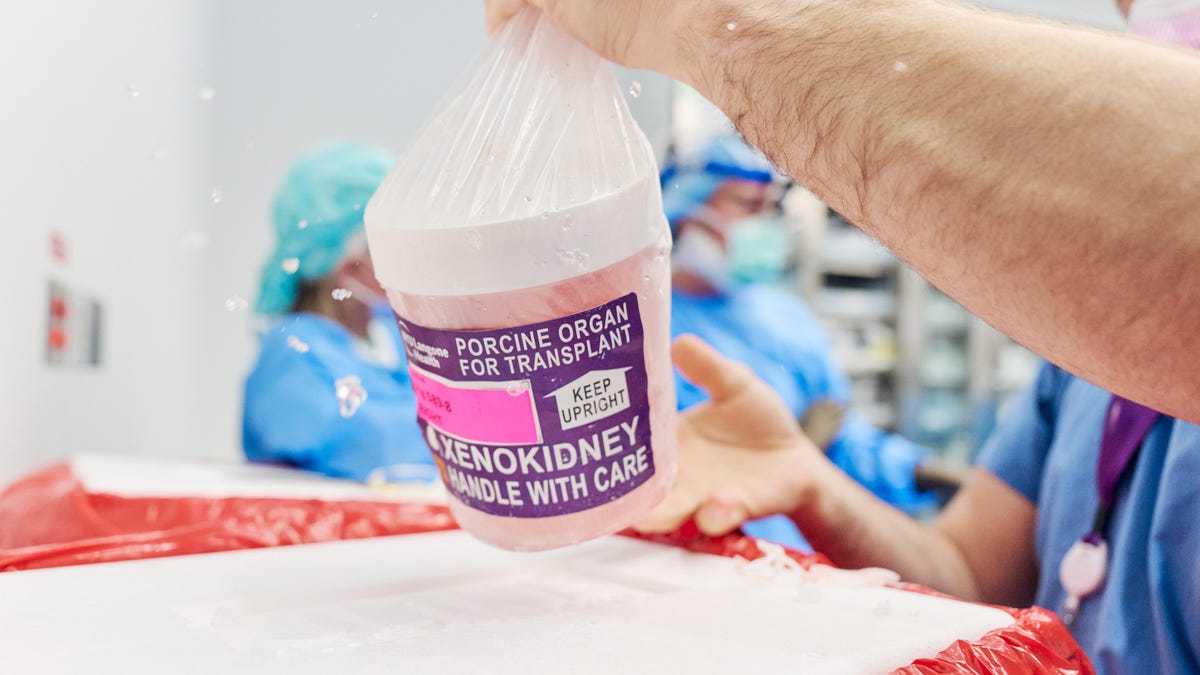Another milestone in pig-to-human transplantation has been reached: Doctors at New York University Langone today announced the world’s first combined pig kidney and heart pump transplant. The recipient is a 54-year-old woman named Lisa Pisano, who was diagnosed with incurable kidney disease and heart failure.
The concept of animal-to-human organ transplantation, or xenotransplantation, has been popular for decades given the ongoing shortage of human donor organs. But only recently has this approach appeared to be within reach, largely thanks to advances in gene-editing technology that have allowed scientists to create pigs that are more compatible with human biology. An important difference is that pigs and other mammals normally produce the sugar alpha-gal in their muscles, while humans do not.
In recent years, various research teams – including scientists at NYU Langone – have successfully experimented with these pigs. Their experiments were largely involved Animals and a few people were declared brain dead, whose bodies kept their families mechanically alive for a time while the donated organ was monitored. More recently, health authorities have given researchers permission to carry out these transplants experimentally on living people. In March, 62-year-old Richard Slayman became the first living human to receive a genetically modified pig kidney transplant, performed by doctors at Massachusetts General Hospital.
Like other recipients of these altered organs, Lisa Pisano had few other options. She had progressed to end-stage kidney disease, treatment of which required constant dialysis, and she had a long history of heart problems, including a recent cardiac arrest. However, she was not a good candidate for a typical heart or kidney transplant due to several chronic illnesses and high levels of antibodies against human tissue that would reduce the chances of success.
Pisano likely would have benefited from receiving a left ventricular assist device (LVAD), a heart pump that can take over some of the organ’s functions. These devices are used either to keep people stable while they wait for a heart transplant or as long-term treatment for people who are not eligible for a heart transplant. But her pre-existing kidney disease would normally rule out that option. And without a heart pump, she would probably only have a few days to weeks to live. NYU doctors decided to ask Pisano if she would be willing to receive both the pump and a new pig kidney, to which she quickly agreed.
The first procedure of its kind was performed within nine days by two separate surgical teams at NYU in early April. The heart pump was first implanted on April 4th, followed by the kidney transplant on April 12th. And although Pisano has experienced some complications and is still being monitored in the hospital, she appears to be recovering well so far.
“It is incredible to consider the scientific advances that allowed us to save Lisa’s life and what we as a society want to do for everyone who needs a life-saving organ,” said senior transplant surgeon Robert Montgomery, director of NYU Langone Transplant Institute, in one opinion.
Although this is the second porcine kidney transplant in as many months and the fourth porcine organ transplant overall, there are some important differences between them. Aside from the added complexity of implanting a heart pump, the NYU team chose to use a pig with just a single genetic change (removal of alpha-gal), while the Mass General team used a pig that had more than 60 genetic changes . The NYU team believes this one change will be enough to make pigs compatible with humans when combined with existing immunosuppressant therapy. They also transplanted the pig’s thymus gland, an organ that helps train immune cells. New research has recommended Such double transplants can reduce the risk of rejection and improve compatibility between a donor organ and its new host.
Even if things continue to go smoothly, Pisano still has a long recovery and an uncertain future ahead of him. And it will ultimately take successful clinical trials to make this technology available to the general public. But NYU researchers and others are already working with the Food and Drug Administration to advance these studies. For her part, Pisano is hopeful about the potential of this treatment for herself and others in her situation. “All I want is the opportunity to live a better life,” Pisano said in a statement.
